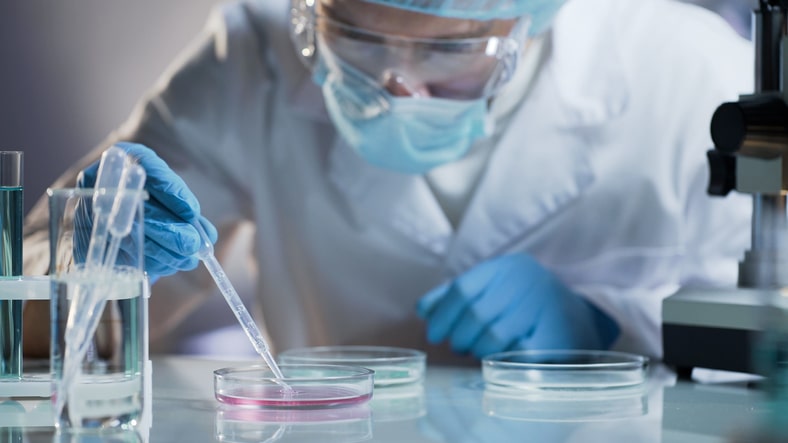Cellular assays form the backbone of basic research and drug discovery. A cell culture is the perfect environment in which to collect information about normal and abnormal growth, and to test novel drug compounds safely in a controlled environment. An assay in biology is carefully designed to test a single variable. Once a standard protocol for a cellular assay is established, it is highly consistent, so the chances of having confounding variables is low. This streamlines experiments and makes it easy to analyze data and draw conclusions.
Cell cultures are usually generated from cell lines that have been well-characterized over time. These cells can be stored frozen for many years and then coaxed back to rapid growth and cell division. Another option is to use primary cells that are uncharacterized and isolated directly from a patient. There is more variability in primary cell cultures, but these are generally used when the goal is to elucidate some information about those cells. On the other hand, immortalized lines are used for drug development because they are highly consistent and well-characterized, so any changes in growth or biomarker production are likely due to an effect of the drug. When isolating primary cells it can be useful to use biomagnetic cell separation to enrich a target cell population and eliminate any unwanted debris. Biomagnetic cell separation is efficient and gentle on cells when a properly designed magnetic separation rack is used.
The traditional cellular assay is performed on a flat plate such as a petri dish or segmented plate with 6, 12, 24, or even 96 individual wells. Newer technologies are enabling good cell culture growth in three dimensional space, which produces cultures that are more representative of in vivo conditions. This three-dimensional model is especially useful for growing cancer cells in preparation for drug studies. The media is chosen carefully to provide essential nutrients for rapid growth, to encourage differentiation, or to stress cells to see how they respond.
Types of cellular assays
There are many different types of cell culture assays. Some of the most common include:
- viability and proliferation assays
- apoptosis assays
- epigenetic assays
- target engagement assays (kinase)
- analysis by flow cytometry
- kinase phosphorylation assays
- invasion and migration assays
- colony formation assays
- immuno-oncology assays
- cytokine and chemokine measurement
- 3D tumor spheroid assays
- gene expression
- cell angiogenesis assay
- cell-based ELISA
Many of the assays listed here are used to understand growth and development of cells or to test their resilience to stressful conditions. Other assays are used to understand changes in gene expression or protein production under different conditions. Cells are dynamic environments, so a well-designed assay is essential to understand the changes that occur in cell cultures throughout the experiment.
Related news





